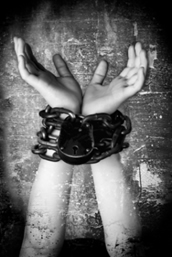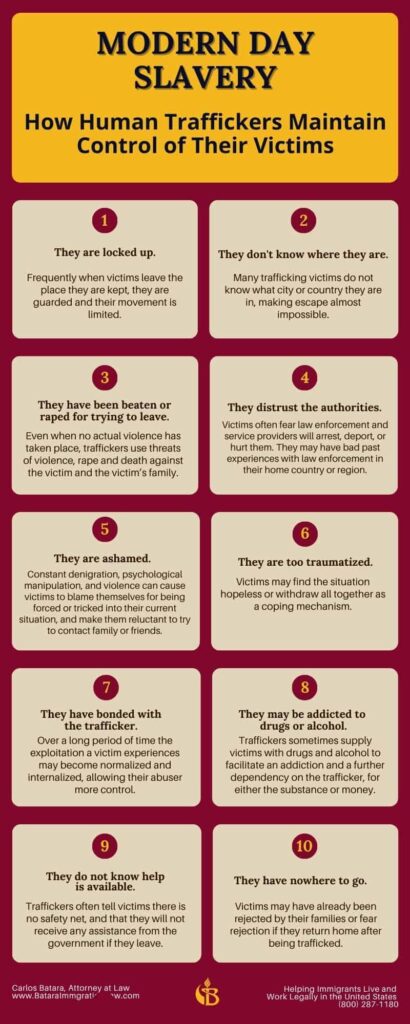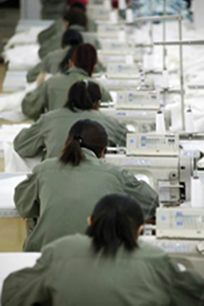
Immigration and Customs Enforcement (ICE) officials have documented a recent surge in human trafficking incidents throughout the Inland Empire.
Moreno Valley. Perris. Rubidoux. Palm Desert. Riverside.
Beaumont. Rialto. Victorville. Yucaipa. San Bernardino.
The list goes on and on.
Many women and children are trapped in its web.
The problem of modern day slavery is global in nature.
Yet, experts assert that if you know the signs of modern day slavery, you would notice that it is closer to you than you ever imagined.
In an interview with the Riverside Press Enterprise, ICE spokeperson Virginia Kice explained,”Human smugglers are increasingly choosing the Inland area over Los Angeles because of the larger, less expensive homes here, stepped-up enforcement in Los Angeles and more space between homes, which often decreases the chance of being caught.”
Human Trafficking: Up Close And Personal
Last summer, at my daughter’s birthday party at a nearby park, I noticed a woman, half lost, half disjointed walking nearby. She was selling handmade knickknacks and candy bars.
My initial mental instinct was to perceive her as homeless. As she walked closer to where I was grilling chicken, burgers, and hot dogs, I sensed she was not simply homeless.
She was in late 20s or early 30s but moved like an over-worked 40 year old person.
Her clothes looked like fifth generation hand-me-downs. They were badly mismatched and her shoes were starting to burst open on the sides.
The more I watched, the more curious I became. I could tell she did not speak English. I told my children to offer her a plate of food in Spanish.
When they went up to her, she looked side-to-side, forward and backward, before coming over to one of our tables. She ate quickly and after looking side-to-side, forward, and backward again, she ate a second plate. She was nearly starving.
She didn’t talk much. She was very grateful.
She thanked us profusely and left. I tried keeping my eye on her. I could tell someone was monitoring her actions. I wanted to catch the license plate number of her abuser’s car. But she disappeared, almost in an instant.
The tell-tale signs were there. I missed my chance to help her.
The Hidden Debasement Of Human Lives And Modern Day Slavery
Of course, as explained in The Blue Campaign: The Way Against Human Trafficking And Human Slavery, Riverside County is not alone in facing this silent, almost mysterious crime against humanity.
Officially, human trafficking is defined as the process by which a person is recruited to be controlled and held captive for the purpose of exploitation.
It involves the use of abduction, coercion, deception, fraud, or force. It subjects men, women, and children to forced labor or sexual exploitation for economic profit.
It differs from migrant smuggling because the victims have not given their consent, or if they have, they have been deceived about the purpose of their journey.
Victims are placed in jobs like making clothes, growing food for export, assembling toys, cleaning homes, and providing childcare for their slaveholders.
Women and young girls, starting at ages 12-14, are often forced into prostitution.
Throughout the United States, victims are trapped in an underground world of physical and emotional abuse at the hands of legal residents and citizens.
Recent newspaper headlines tell the story all too clearly.
- Charges are filed against a manpower leasing company in Kansas City, Missouri for labor trafficking. The workers, mainly from Jamaica, the Philippines, and the Dominican Republic, provided services for hotels, resorts, casinos, and construction companies.
- A restaurant owner in Woodstock, Georgia is apprehended for operating a prostitution ring, comprised of women from Guatemala, Nicaragua, and El Salvador out of his place of business during non-restaurant hours.
- Five brothers from Ukraine are arrested for running a human bondage center from their cleaning business in Philadelphia, Pennsylvania, shuttling victims to New Jersey, New York, Maryland, and Washington, D.C.
- A shoot-out occurs at a Houston, Texas house serving as a smuggling center, where Honduran nationals are beaten, wrapped in trash bags, and raped daily, while the smugglers extort money from the victims’ families to obtain their release.
Yet, to a large extent, trafficking operates under the public radar in the U.S.
How Traffickers Maintain Control Of Their Victims
In 10 Reasons Trafficking Victims Can’t Leave, Amanda Kloer outlines several reasons victims do not leave their victimizers.
1. They are locked up. Frequently when victims leave the place they are kept, they are guarded and their movement is limited.
2. They do not know where they are. Many trafficking victims do not know what city or country they are in, making escape almost impossible.
3. They have been beaten or raped for trying to leave. Even when no actual violence has taken place, traffickers use threats of violence, rape, and death against the victim and the victim’s family.
4. They distrust the authorities. Victims often fear law enforcement and service providers will arrest, deport, or hurt them. They may have bad past experiences with law enforcement in their home country or region.
5. They are ashamed. Constant denigration, psychological manipulation, and violence can cause victims to blame themselves for being forced or tricked into a their current situation, and make them reluctant to try to contact family or friends.
6. They are too traumatized. Victims may find the situation hopeless or withdraw all together as a coping mechanism.
7. They have bonded with the trafficker. Over a long period of time the exploitation a victim experiences may become normalized and internalized, allowing their abuser more control.
8. They may be addicted to drugs or alcohol. Traffickers sometimes supply victims with drugs and alcohol to facilitate an addiction and a further dependency on the trafficker, for either the substance or money.
9. They do not know help is available. Traffickers often tell victims there is no safety net, and that they will not receive any assistance from the government if they leave.
10. They have nowhere to go. Victims may have already been rejected by their families or fear rejection if they return home after being trafficked.

Operation SafeHouse Leads Inland Empire Coalition Against Human Trafficking
In response to this challenge, Riverside County recently launched a program to combat human trafficking in local communities.

Led by Operation SafeHouse, a network of shelters across Riverside County for runaways throughout the Inland Empire. The focus is on young women trapped into forced labor, including working at underground sweatshops, or prostitution.
The program aims at providing counseling, rehabilitation, and shelter for victims.
As part of this effort, an anti-human trafficking hotline for Riverside has been established, (888)373-7888.
This venture is part of a nationwide effort spearheaded by the Department of Homeland Security (DHS).
As described in New Centers Of Human Trafficking: Riverside and San Bernardino, effective anti-trafficking initiatives must have three components: (a) public awareness, (b) victim assistance, and (c) enhanced law enforcement training.
Being an immigration attorney in Riverside, with clients from communities like Moreno Valley, Perris, and Beaumont, I have seen firsthand the reluctance of immigrant victims to cooperate with law enforcement officials.
However, once they are placed in immigration court, they can sometimes qualify for deportation relief under special immigration programs like T visas for trafficking victims and U visas for victims of crime by working closely with government authorities.
It’s not an easy solution. It’s painful, to put it mildly, to relive past moments of abuse and mistreatment.
But it could prove life-changing for victims. If successfuly, they are freed from bondage, counseled to take control of their lives, and learn important survival and English skills.
To help immigrant victims get to this stage, like most members of our society, as last summer showed me, I need to improve my skills in spotting and fighting abuse and trafficking.
That’s an important first step which, hopefully, you’ll take with me.
After all, such coalitions can only be as effective as its community awareness building efforts expand through local communities.




